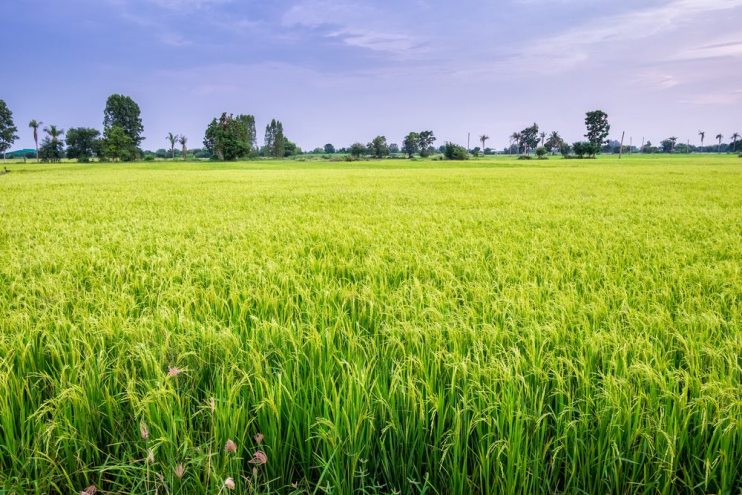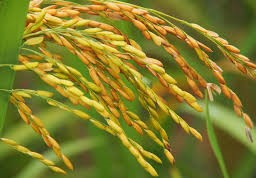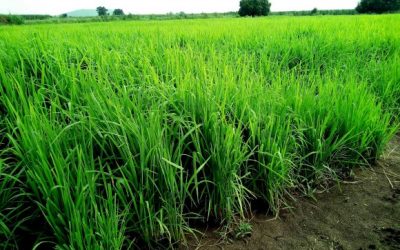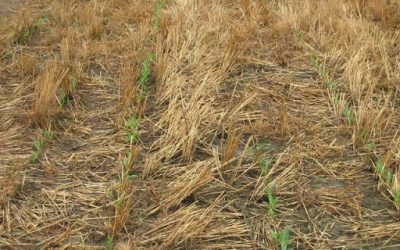Confronting environment degradation and increasing pest pressure.

The intensification of rice production has harmed the environment. The excessive use of pesticides causes water pollution and human health hazards. Intensive irrigation with inadequate drainage has increased the salinity level in rice soils in semi-arid and arid zones. After years of high yields, rice soils are depleted of nutrients. The application of combinations of following existing technologies would be necessary for sustainable intensification of rice production in the future:
Soil fertility: In the past, traditional rice farmers in Asia used raw organic matter, human and animal manures, ashes, fish bone and other waste materials to make the rice plant more productive. Compost and green manures had also widely used. Compost was a major factor for farmers to win in yield contests organized in Japan during 1948-1968. In many countries green manure is regarded as an important nutrient source for rice. Azolla for example had been widely used by farmers in China and northern Viet Nam to fertilize rice crops. The use of compost and other organic sources of fertilizer, however, has declined with increased industrialization, high cost of labor, and the availability of inorganic fertilizers. Site and season specific nutrient management and recommendations could reduce nutrient losses and chemical pollution of the environment. Soil analysis is widely practiced by farmers in developed countries for determination of fertilizer types and doses for application to rice crop. The majority of farmers in developing countries, however, could not afford the cost of soil analysis.
Integrated Plant Nutrient Management (IPNM) systems promote the application of balanced doses of inorganic and organic fertilizers and the application of fertilizer doses based on the responses of rice varieties planted in different eco-zones and in different seasons. It has been found that IPNM is more beneficial in maintaining rice soil fertility and it has been widely adopted in irrigated lowland rice production in many countries. Among the mineral element, rice crop requires considerable amount of nitrogen. In the 1970s and 1980s, the International Rice Research Institute and a good number of national institutions recommended the application of 2/3 N rate before transplanting and 1/3 N rate at panicle initiation stage in order to improve the efficiency of nitrogen fertilizer use in the cultivation of high-yielding varieties. Recently, the use of chlorophyll and leaf color chart has been recommended for determination of nitrogen requirement of rice plants during their growth.
Pests and diseases: In the 1970s up to the early 1980s the application of large doses of pesticides were recommended in irrigated lowland rice production together with resistant rice varieties. Considerable evidence has been produced to challenge the need for routine chemical treatment to protect the rice crop. Also some rice insects and diseases have different biotypes and races. A resistant variety may become susceptible after being successively cropped for a period of time because the insect develops new biotype. For example IR36, released in 1976, has high level of resistance to brown plant hopper, a major rice insect of rice in Asia that transmit ragged stunt virus. After few years of wide cultivation, IR36 was severely damaged in mid 1980s by a new biotype of brown plant hopper and the associated ragged stunt.
Rice fields harbor a tremendous diversity of animals, plants, and micro-organisms; some of them are harmful, while others are beneficial to rice crop. Integrated Pest Management (IPM), therefore, was popularized for rice production. The basic premise of IPM is that no single pest control can be completely successful and crops may sustain certain degrees of damages before yields are affected. The IPM is an approach to crop protection based on understanding and managing the agro-ecosystem to create conditions that suppress the development of pests and diseases. Important elements are conservation of natural enemy populations for insect pest control. Techniques applied under IPM include a broad variety of agronomic practices to suppress pest and disease development, biological control agents, insect lures and traps and if additional use of pest management inputs is justified, chemical pesticides may be applied to limit the building up of the population of harmful insect or disease.
Weeds limit rice yield greatly in all ecosystems through competition with rice for sunlight, water and nutrients. Weed competition during early growth stages of rice reduces rice yield greatly. Weed management is more difficult in direct seeding than in transplanted rice. Manual weeding requires time and man power, sometimes up to 150 man-days per hectare, especially in upland ecosystems, while herbicide treatment could be costly and may have undesirable effect on the environment of rice field and surrounding areas.


